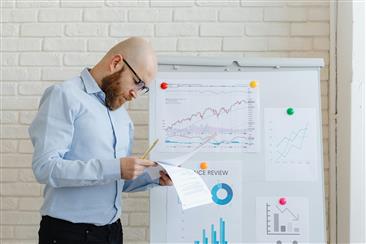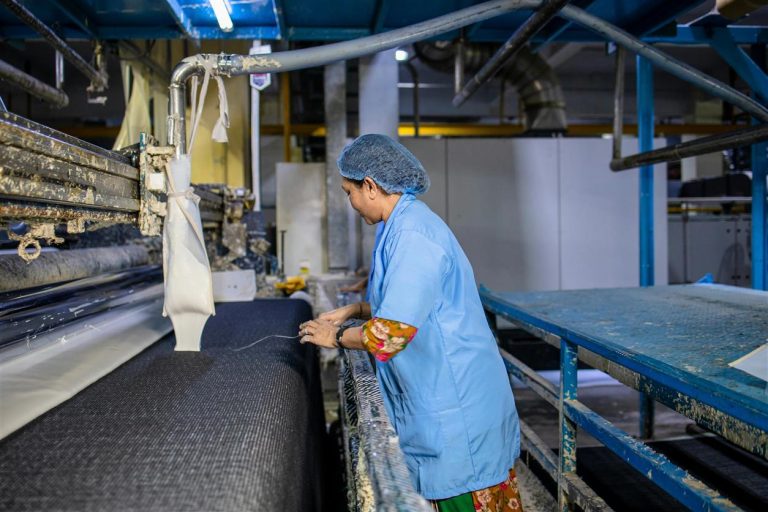
When the COVID-19 pandemic swept across the globe, it exposed a vulnerability in modern commerce that had long been ignored: supply chains were efficient, but fragile. As ports backed up, factories shut down, and transportation bottlenecks multiplied, businesses scrambled to source raw materials, deliver products, and meet customer demand. What was once an invisible network supporting daily life suddenly became the center of economic discussion.
Now in 2025, several years removed from the worst of the pandemic, supply chain resilience has become a top priority for businesses of every size and across every sector. The experience of 2020–2022 served as a harsh lesson that lean, just-in-time models—while cost-effective under ideal conditions—can collapse under stress.
The conversation has shifted. It’s no longer just about cutting costs or maximizing speed. It’s about building systems that can adapt, absorb shocks, and continue functioning in the face of unexpected challenges.

From Efficiency to Redundancy
For decades, global supply chains were built around one central idea: efficiency. Sourcing from low-cost regions, minimizing inventory, and reducing lead times became the dominant strategies. It made sense—until everything went wrong.
Today, many companies are taking a different approach. Redundancy, once viewed as wasteful, is now seen as essential. Businesses are diversifying suppliers across multiple regions rather than relying on a single country. Some are holding more inventory, even at the expense of short-term profits. Others are investing in dual sourcing—splitting orders between domestic and international partners to hedge against future disruptions.
While these strategies come with higher upfront costs, they provide much-needed insurance. The goal is no longer perfection but continuity.
Reshoring and Regionalization
Another noticeable shift is the return of manufacturing closer to home. While reshoring isn’t viable for every industry, some sectors—especially those dealing in pharmaceuticals, semiconductors, and food production—are bringing key operations back within national or regional borders.
This move isn’t purely about patriotism or economic nationalism. It’s practical. Proximity reduces dependency on fragile international shipping routes and cuts response times during crises. Regional trade blocs, such as the USMCA and the EU single market, are also encouraging companies to think more locally when building supplier relationships.
Still, reshoring isn’t a silver bullet. Labor costs remain higher in developed markets, and finding skilled workers domestically can be a challenge. As such, regionalization—developing multi-country clusters in nearby areas—is often seen as a more realistic middle ground.
Digital Visibility and Real-Time Monitoring
One of the most powerful tools in building supply chain resilience is information. In the past, companies often had limited visibility beyond their immediate suppliers. If a tier-2 or tier-3 supplier failed, it might take weeks to trace the impact.
That’s changing. Businesses are now investing heavily in technologies that allow real-time tracking of shipments, inventory, and supplier performance. Sensors, cloud platforms, and predictive analytics provide clearer insights into where goods are, what’s causing delays, and which nodes are most at risk.
Instead of reacting to disruptions after they occur, companies are learning to anticipate and reroute before problems escalate. This increased transparency doesn’t eliminate risk, but it shortens response time—and that can make all the difference.
Human Capital and Organizational Agility
Behind every supply chain are people making decisions, solving problems, and adapting to change. The pandemic revealed not only technological gaps but also organizational ones. Teams that were too siloed, too slow, or too dependent on outdated systems struggled to pivot.
In 2025, successful businesses are rethinking their internal structures. Cross-functional collaboration is being encouraged. Procurement, logistics, and production teams are working more closely with IT, finance, and risk management. Training has expanded to include scenario planning, risk assessments, and contingency development.
In this new environment, agility doesn’t just mean being fast. It means being flexible—able to shift strategies, reassign resources, and respond to events with clarity, not panic.

Environmental Risks and Climate Disruptions
Crisis planning is no longer limited to pandemics or geopolitical tensions. Climate change has become a central concern. Floods, wildfires, droughts, and extreme weather events are disrupting production and transport with increasing frequency.
Businesses are factoring environmental risk into their supply chain decisions. Warehouses are being relocated away from high-risk flood zones. Companies are mapping out climate exposure across their suppliers. Some are even including environmental risk scores as part of supplier selection criteria.
This isn’t just about conscience—it’s about continuity. As climate volatility increases, so does the urgency to build systems that can operate under harsher, less predictable conditions.

Government Involvement and Policy Shifts
Governments, too, are stepping in. In many countries, supply chain resilience is no longer viewed as a purely private-sector concern. Strategic industries—such as healthcare, energy, and technology—are now considered matters of national security.
This has led to new regulations, public-private partnerships, and funding for local production capacity. For example, the U.S. CHIPS and Science Act is designed to boost domestic semiconductor manufacturing. In the EU, initiatives are underway to secure critical mineral supply chains for clean energy and tech industries.
These efforts signal a broader recognition that modern economies cannot afford to leave essential supply chains to chance. Businesses operating in these sectors are finding themselves not only accountable to shareholders, but also subject to evolving national policy priorities.
The Bottom Line: Risk Is the New Normal
If the past few years have taught business leaders anything, it’s that disruption is not a once-in-a-decade event. It’s a feature of the landscape now. Whether due to health crises, political conflict, cyberattacks, or environmental hazards, the next supply chain shock is not a matter of “if,” but “when.”
Companies that treat resilience as a passing trend are setting themselves up for failure. Those that build it into their culture, processes, and partnerships will be far better equipped—not just to survive the next crisis, but to maintain operations and customer trust when others cannot.
In 2025, supply chain resilience isn’t a nice-to-have. It’s a core business function—no less essential than finance or strategy.






